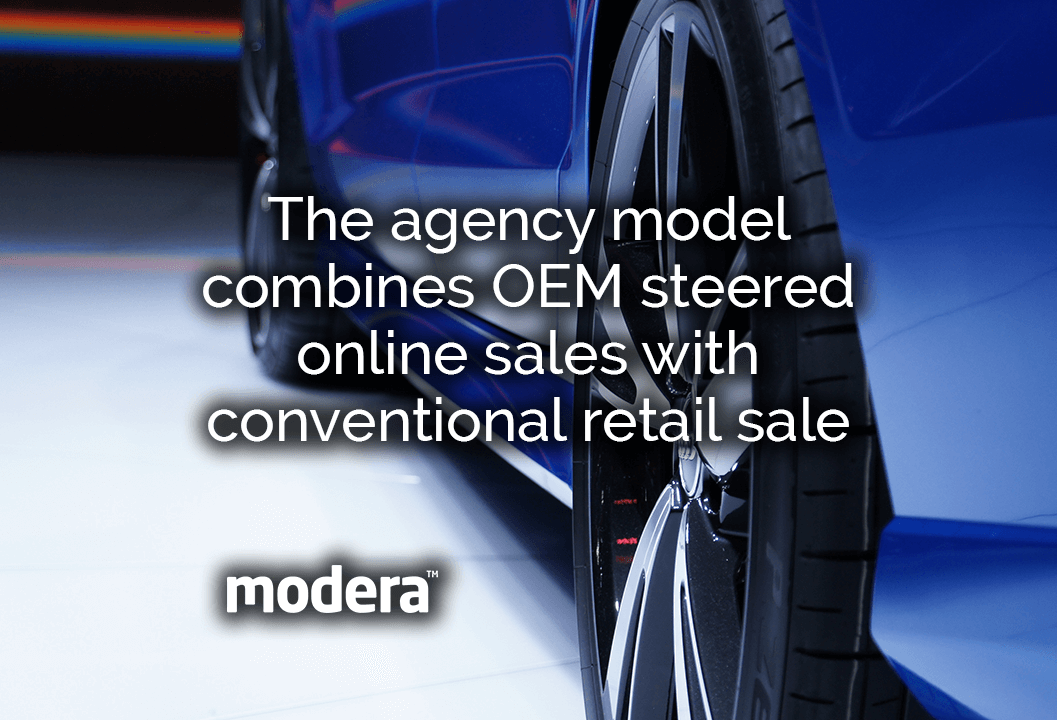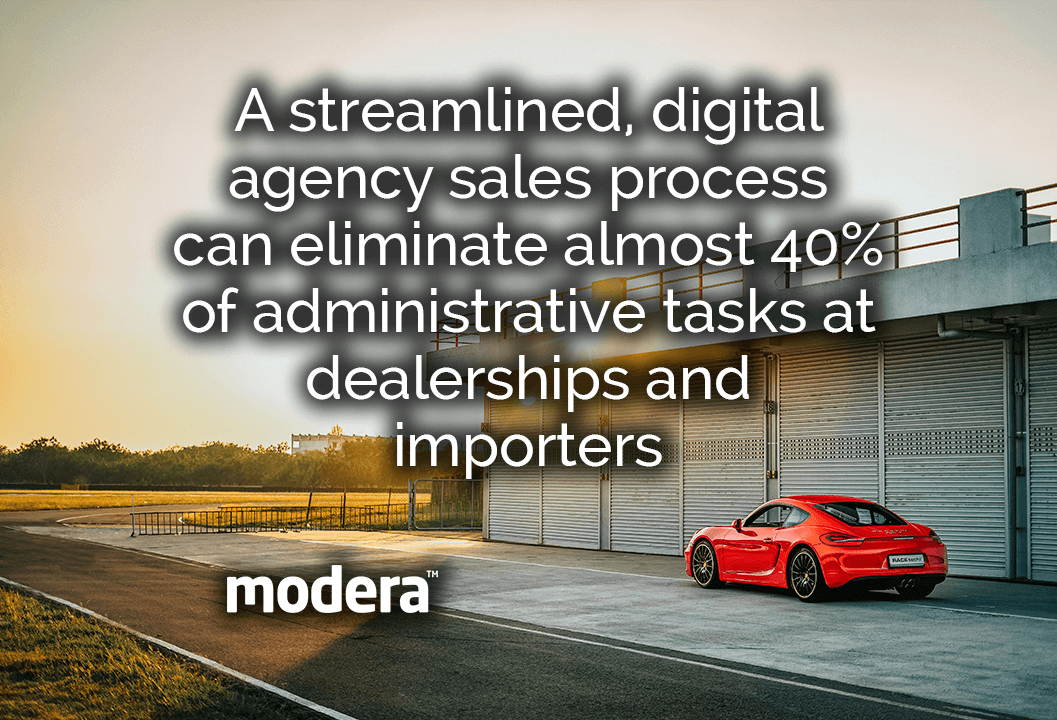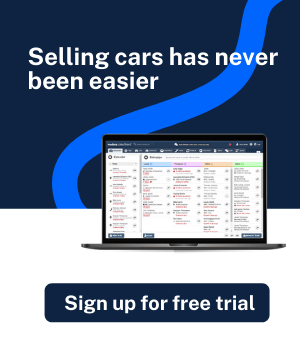
With the Covid-19 pandemic still casting a long shadow, the economy continues to fight an uphill battle. The present economic situation has made it clear that it is high time for original equipment manufacturers (OEMs) and dealerships to transition to a sustainable sales model. It is no longer a choice but an obligation. Moreover, there isn’t much time left for implementation.
What is the need for a new sales model?
One of the main reasons to change the sales model is rapidly changing customer expectations. They want a smooth buying experience across both online and offline channels, hence an omnichannel approach is a must. In addition, they want a personalized dialogue with the brand and cross-channel price transparency. Due to the Covid-19 pandemic, there has been increasing pressure regarding competition, costs, and margins. Thus, OEMs and dealerships are forced to rethink sales structure and models.
When it comes to the B2C sector, companies like Tesla have depended on online sales via strategically placed showrooms, from the very beginning. In comparison, several established OEMs still rely heavily on conventional three-tiered sales. However, this isn’t sufficient:
- Outdated, decentralized IT system landscapes prevent uniform usage of sales channels.
- Storing customer data in silos makes consistent customer interaction extremely tough.
- Existing retail processes can’t solely achieve the end-to-end experience customers want.
- When capital is tied up in inventory, it increases risk for dealers.
- A margin-driven, dealer-focused price war leads to drawn-out price negotiations from the customer perspective.
The idea shouldn’t be about replacing the dealer network that has developed over time with a direct online sales channel. Rather the objective should be to run several sales models in parallel, in order to utilize existing dealer assets efficiently. It can also help to deal with organizational and technical challenges.

Welcoming the agency sales model
The agency model combines OEM steered online sales with conventional retail sales – it is the perfect balancing act. It optimally utilizes existing dealer infrastructures and digital sales to guarantee benefits for all parties involved.
For the very first time, this type of ecosystem across all distribution levels allows OEMs to achieve a 360 degree view of the customer. Moreover, it means lower costs associated with sales and newer revenue streams as well. Thus, it paves the way for an innovative, customer-centric, and omnichannel sales process. It also allows the adoption of a target-oriented approach and transparent reporting.
In the agency model, dealers evolve from pure offline salespeople and become agents, while continuing to be the face that customers are used to. On the other hand, OEMs start interacting directly with customers as they are now responsible for the sales transaction. Keep in mind there will be new challenges, as OEMs take over processes and workflows from dealers, as well as risks and assets. This shift in responsibilities protects the existence of dealer networks, especially in times of crisis.
To transform an established sales organization sustainably, there must be considerable investments in organization, processes, and IT systems. Moreover, there are usually organically cultivated heterogeneous structures in the individual national sales entities. Introducing the agency sales model in this context, can be viewed as an opportunity to establish harmonized processes and systems. But this requires time and effort. Decision-makers should examine both sides and evaluate the long-term cost reduction and sales potential in addition to the one-time investment costs.
How do customers benefit?
A global survey by Capegemini Invent was conducted with 6000 consumers, from six of the most crucial automotive markets worldwide. They are China, UK, Germany, Spain, France, and Sweden. The results show that it is not only OEMs and dealers who benefit from this model, but customers do too.
A cross-channel sales process, universal price consistency, and possibility of buying directly from manufacturers’ websites can be optimally implemented with the agency sales model. It allows OEMs to set prices and define specific targeted online incentives for customers. Apart from that, consistent prices reduce intra-brand competition – a huge benefit for both dealers and customers. Dealers can differentiate based on overall experience, while focusing on better services and consultation. This way, customers don’t feel pressurized or obliged to compare offers from third party-providers.

Forging the path ahead for OEMs
When OEMs transform parts of their sales models to agency sales, they can improve sales and gain an advantage in the market as well. Moving to an agency model is an attractive option for OEMs, and increasingly, they may have little option but to do so.
OEMs that quickly adopt the agency sales model have the chance to test the omnichannel approach for selected markets or vehicle models. For instance, they can start with a specific product, such as electric vehicles. It offers large OEMs and dealers the possibility of gaining experience with the new sales model while reducing risks on both sides. The early buy-in and integration of dealers is something that can’t be eliminated.
How can the automotive agency model help your dealership?
1.) Increase in Sales
It is estimated that the introduction of the agency sales model will eventually lead to a long-term increase in sales. Let us find out more:

1.1.) Increase in transaction prices
Transaction prices, which are the actual sales prices achieved, are one of the biggest profit levers for car manufacturers. When transaction prices increase, it has a 1:1 effect on the profit of the sales organization. So if it is a three-step sales model, the dealership acts as an independent vendor. They ultimately decide the transaction price. The maximum level for the lower price limit is determined by a fixed retailer margin. Situational sales promotion measures for specific model or customer group are taken into account too.
Each year, OEMs and importers shell out loads of money in sales promotion measures. Thus, they have a negative influence on the transaction prices in the markets affected. Due to lack of credible data, it isn’t possible to systematically monitor success and optimize measures. It leads to the fact that sales promotion measures are generally used reactively to achieve short-term sales stimulation.
In the agency sales model, the importer decides the transaction price in a market. Moreover, centralized sales systems and data management across all sales levels ensure strategic planning of transaction prices and sales promotion measures dynamically. In this way, the highest possible transaction price can be achieved. Apart from the optimization of sales promotion measures, uniform prices in a market prevent intra-brand competition. Both effects improve transaction prices in the long-term.
1.2.) Better sales volumes
The chunk of data provided by the agency sales model ensures the importer can move away from short-term measures aimed at selling certain vehicle models. Instead, they can work towards holistic customer lifetime value management. The new data can be used to evaluate customer behavior in a targeted manner. Dealerships can find out how high customers are willing to pay, or more about their loyalty to a brand. It helps generate the decisive motivation to buy at the right moment. Thus, new customers can be acquired, while turnover rate and churn rate, goes up and comes down, respectively. All this adds to customer lifetime value and increases sales volumes in the long term.
1.3.) Upselling potential
Apart from increasing transaction prices and sales volumes, upselling potential can be realized as well. This way, new business models can be implemented more efficiently. Whereas vehicle and digital services are separated in the traditional sales model, they are offered centrally from one source in the agency model. It can create a closed ecosystem, so customers can be retained throughout the customer life cycle. It makes it much easier for importers to offer customers additional products and services, digital services, and new mobility formats.
2.) Cost Reduction
Almost a quarter of the costs of car sales can be associated with distribution. The costs are split across all three steps of the value chain. Take a look:
2.1.) Centralization
As per the traditional sales model, till date several functions have been organized in a decentralized manner. Each dealership has its own dedicated resources for marketing and customer service. Cost-effective online sales solutions are also operated using a decentralized approach by individual dealers.
Until now, the focus of importers has been more on the administrative management of the dealer network. In the agency sales model, the importer assumes an operational role that requires more diverse competencies. For example, it includes the operation of central online stores and central lead generation. It also involves establishing central customer service and marketing departments. The shared service centers reduce redundant functions in the sales organization, while realizing economies of scale. Moreover, quality can be given a boost by bundling competencies and setting standards.
2.2.) Streamlined digital processes
Centralization of competencies is a good idea, but leaner sales processes are required as well. The agency model provides precisely that, along with harmonization of the IT system landscape. It leads to cost reduction in the sales organization. A streamlined, digital agency sales process can eliminate almost 40% of administrative tasks at dealerships and importers. It is due to the fact that time-consuming price negotiations and complicated manual approval processes and system changes are not required anymore. The expected increase in online sales and the provision of self-service functionalities will also reduce the burden on retailers.
2.3.) Resource relief
When prices are transparent and uniform, they indirectly contribute to a reduction of effort in the retail trade. Customers visit up to 3 retailers due to price negotiations before the purchase is closed. It results in resource expenses for the trade organization. However, it can be avoided by the provision of uniform prices in the agency sales model.
3.) Improve Customer Experience
The customer buying journey in the automotive industry is replete with inefficiencies. Most OEMs find it daunting to have a 360-degree view of the customer profile due to the fragmented data collection at dealerships. Moreover, inconsistency in the service levels remains a concern since the OEMs’ control over the dealers is limited. In the agency model, with sales not being the primary responsibility of the agents, OEMs can create innovative compensation methods to encourage customer service and data capture.
Customer-centric activities like test drives, walk-in engagement can be well compensated and bonus paid on qualitative outcomes like customer satisfaction and data quality. The agency model, through unification of data and control of online and offline channels, allows OEMs to unlock a vast revenue potential by building an authentic omnichannel experience with a seamless customer journey.

How can agency sales remain viable?
Dealerships must be viewed as the customer’s primary contact and partner. Personal contact between customer and dealer will play a fundamental role in the agency model. As per research, dealers and OEMs agree that the introduction of a new sales model in such trying times might be difficult. However, it is necessary to ensure survival in the market on a long-term basis.
Dealers are keen to transform the sales landscape because of the high costs retail costs. In fact, these expenses can exceed the earnings potential and lead to a need for non-automotive activities to cross-subsidize the original core business. There is extremely high competition from new startups too. It is imperative to counteract this pressure with appropriate solutions. Agency sales can only succeed if there is equal partnership between dealerships and OEMs.
Fair and sustainable remuneration model to ensure customer centricity
Level of remuneration – replacing the sales margin (difference between purchase and sales price) – is one of the most crucial success factor at all levels. A very decisive success factor, which is emphasized by all dealers surveyed regardless of size, is that all agents should receive same commission. Moreover, all customers should be charged the same price too. Uniform provisioning is required to ensure dealer satisfaction, along with a shift towards customer centricity. To sum up, adequate commission is a must to make the model work.
Price transparency and competition as a lever for increased customer satisfaction
As mentioned, the customer visits up to 3 different retailers before deciding on a purchase. If OEMs specify uniform prices, it can spare the customer those tedious visits as there won’t be any requirement for price negotiations. A transparent and uniform price guarantees dealers better planning with secured margins. It also means reduced intra- and inter-brand competition. Customers get a better experience across several channels, including online sales offers. Dealers can focus more on the customer, which means greater satisfaction for all stakeholders. Price transparency is what matters – customers shouldn’t feel they have missed out on a better offer.

New IT infrastructure and processes to optimize the customer approach
Changes to retail contracts associated with the introduction of agency sales will promote sharing of data between dealers and OEMs. With better access to data, dealerships can approach customers in a more targeted and analytics-based manner. Increased transparency in the lead management process, along with an improved 360-degree customer perspective can open up new sales opportunities. A consistent IT infrastructure and new processes adapted to digital channels are necessary. Remember, customers are the main initiators and drivers of change, so their requirements for an integrated customer experience must be taken into account. Appropriate IT and new processes are important.
What is the break-even relevance?
To make a solid investment decision, the initial implementation costs and potential long-term expenses and sales need to be compared. The investment for a medium-sized market usually pays off after approximately 4 to 5 years. Fair distribution of the expected profits is vital for the investment to succeed. To that end, decision-makers should develop a transparent remuneration and bonus model. It should be done with retailers while designing agency sales and setting up the investment case. If there is an equal partnership, the agency model can successfully combat the upcoming challenges in the upcoming years.

But let us take a pause…
Even though the concept isn’t that difficult to comprehend, there is significant investment costs involved. The introduction of the agency sales model needs a proper commitment from all partners across every sales channel. Chalking out a long-term viable plan is necessary for a sustainable and successful introduction of the agency sales model. Here are a few points to keep in mind:
- Increase in transaction prices through standardized pricing across sales levels and dynamic sales promotion measures.
- Increase in volumes through data-based and customer-specific approaches throughout the entire customer lifecycle.
- Utilization of upselling potential through the customer data acquired and the offer of vehicles and services from a single source.
- Reduction of costs by centralizing functions and minimizing redundancies.
- Use of leaner sales processes to relieve the burden on the sales system and resources.
There are going to be several challenges in the upcoming years, such as new drive systems, decarbonization, autonomous driving, new forms of mobility, and new competitors, to name a few. At a time when automobile manufacturers are transitioning to digital processes, it is all the more necessary for the agency sales model to be implemented. It is a sustainable model that guarantees a plethora of benefits over the long-term, while being able to address the challenges of the current system too.
Let us help bring your automotive agency model into reality with a dealer network management tool, an automotive CRM for dealerships, automotive-focused website builder, an e-commerce site with a car configurator and a used cars trade in tool.

